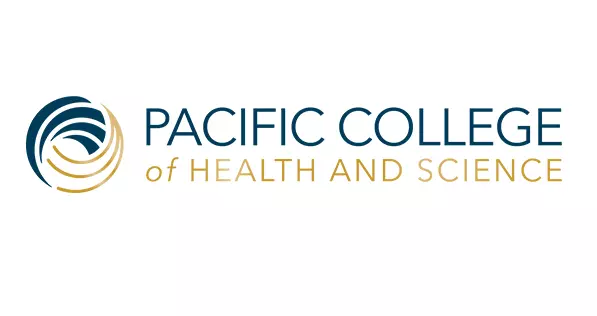By Sarah Poulin-Carpentieri, DACM, LAc, DiplOM
This article was originally published in May 2019 in Acupuncture Today and republished in the Winter 2023 edition of the AIM Newspaper. Read the full paper for free.
Enhancing Communication in Integrative Medicine
As an ever-increasing number of Americans turn toward the integrative medical model, it falls upon us, as practitioners of traditional Chinese and East Asian medicine, to enable our patients to communicate successfully and confidently with their other healthcare providers about our medicine and how it can complement and enhance patient outcomes. While some medical providers may be quite familiar with our treatment modalities, others may be unsure about the safety and efficacy of our practices. Considering the potential language barriers surrounding our diagnostic paradigms and treatment methods, there may be a number of barriers to overcome in convincing medical providers that our medical systems are not only legitimate but offer great benefit to our mutual patients. While we, as medical providers, should be doing the majority of education and outreach to other healthcare practitioners, it is a fact that our mutual patients often serve as a liaison between our offices. By enabling our patients to speak confidently to their other healthcare providers about our medicine and what goes on “behind the curtain,” we benefit not only our patients but our profession as a whole.
Empowering Patients and Collaborative Care
It bears reminding before any discussion of successful communication that there should never be an “us vs. them” mentality. Any successful integrative medical model must inherently run on the assumption that the ultimate goal is the patient’s well-being and health, and we should therefore always strive to maintain open channels of communication. We should never speak negatively about other practitioners or exhibit bias or negative attitudes towards other healthcare systems—these types of attitudes may alienate patients and other providers and serve only to divide rather than unite. Even when disagreements occur (as may certainly happen from time to time), it is important to approach them with a professional, neutral, and measured tone—maintaining an attitude of respect for all healthcare practitioners involved in the patient’s health is essential in ensuring good working relations.
Patient Autonomy in Healthcare Decisions
The first step in ensuring successful communication is to remind the patient that they are, in fact, in charge of their own healthcare goals and treatment plans. If they want to seek out “alternative” care, that is well within their rights. Patients may be hesitant to tell their healthcare providers that they are receiving acupuncture or taking Chinese herbs. This is not only disingenuous but can be dangerous, so it is important to instill confidence in your patient so that they feel comfortable informing their physicians that they are under the care of a licensed acupuncturist. By reminding your patient that they are in charge of their healthcare decisions and helping them to craft what their goals of care might look like, they can then confidently inform the other members of their healthcare team who else is involved in their care. You should also make sure your patient knows what your training and education entails so that, if they feel they need to, they may then share with their physician that you are the recipient of multiple years of post-graduate education in your field, have passed numerous board exams, maintain state licensure, and follow requirements for continuing education. This often allays concerns about safety and training by allowing other medical practitioners to become aware of the depth and breadth of your education, reducing the fear of their patient seeing an unlicensed or unregulated practitioner.
If you think a career in holistic medicine is something you would like to pursue, contact us and speak to an admissions representative to get started on your new journey!
Clarifying Treatment Plans and Goals
The second step in helping to ensure successful communication between our patients and their other healthcare providers is to make sure that our patients have a basic fluency in what their treatment plan entails. This means that we must be able to explain to our patients what their traditional Chinese medicine/East Asian medicine diagnosis and treatment plan may look like. This task can be difficult; we must find a way to easily explain to patients what it is that we are treating them for, in terms of our own diagnostic paradigm, and in words that they can easily relate to the other members of their medical team. In general, it can be easiest to explain these things to patients in terms of symptoms: by explaining to them what symptoms you are addressing and in what order you are addressing these concerns, you can provide a way for patients to keep their other healthcare providers informed of your treatment goals without needing to overwhelm them with discipline-specific terminology, or expecting your patient to explain the nuances of root and branch theory or other such treatment principles. For instance, instead of explaining to a patient that we are treating them for qi and blood stagnation that is causing back pain (which would then necessitate explaining qi, blood, acupuncture channels, etc.), we would want the patient to be able to understand that we are working with the body’s natural pain-modulating systems both locally and within the nervous system to decrease their pain and improve their functionality. This is a quick and easy explanation that patients can then relay to their physicians about the mechanisms of acupuncture and directly explain how it benefits their chief complaint(s). Without drilling them on what you have explained, ensure that your patient can convey to you what you have discussed with them about their treatment plan to ensure that they truly understand.
Building Bridges with Other Healthcare Providers
The third step in enabling successful communication is to open channels of communication with the other health providers, encouraging them to reach out to you if questions or concerns arise, and reassuring your patients that you are a receptive audience to those types of questions. This reassures your patients that you are an active and willing partner in a multi-disciplinary integrative care team. You are the subject matter expert in your field, so it behooves you to be a receptive audience to answer questions and concerns those unfamiliar with acupuncture or Chinese medicine might have to prevent any misunderstandings or misconceptions from arising. This means making sure that you send your patient out with multiple copies of your contact information, so that they can share this information with other pertinent healthcare providers as needed. It also means inquiring and obtaining from your patient informed consent to confer with other relevant providers to share needed healthcare data from the onset of treatment. By establishing yourself as an informed member of the healthcare team, you set the stage for successful communication with other providers.
While our goal is always to be the leaders in communication and to lead the way in reaching out to other medical providers, the matter of convenience in having patients serve as liaisons between provider offices means that we must learn to enable our patients to assist us in serving the higher purpose of successful collaboration. By employing these strategies, we can assist our patients to become more confident participants in their healthcare while also ensuring that we position ourselves as open and willing participants in the field of integrative medicine.
Featured Posts:

